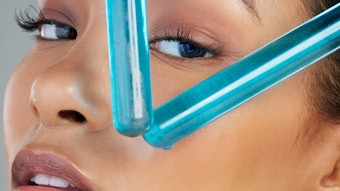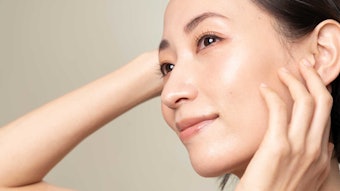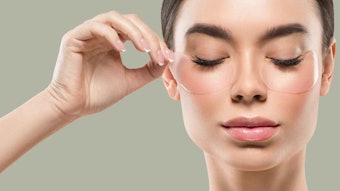When talking to consumers about their hair care wants and needs, it generally does not take long until the word “strength” is uttered. It is especially common to hear the desire for “strong, healthy hair,” which illustrates the inextricable link between these two attributes in the mind of consumers. This, of course, is recognized by marketers of hair care products, who accordingly desire to craft communication messages on product packaging and in advertisements that speak to an ability to improve hair strength. As a result, it becomes necessary to establish a means for measuring and quantifying the “strength” of hair.
To the scientist, this immediately conjures up an assortment of instrument-based mechanical testing approaches that can be used to probe the physical properties of individual fibers. A variety of methodologies can be (and have been) adopted, but it is important to recognize that the properties of hair are a function of its highly complex structure, and different techniques may specifically probe select regions of this remarkable substrate. Therefore, it is not uncommon for different measurement approaches to yield different outcomes.
With this said, it is also recognized that consumer assessment of their own hair strength likely does not involve tugging and manipulating individual fibers in a manner comparable to these laboratory methods. Instead, it would appear that consumer judgment is based on observing the number of broken strands in a brush or comb after grooming, by noticing the number of fibers on the shower floor after bathing, or simply by observing the presence of split ends when looking in the mirror. This highlights a common issue in in vitro testing, wherein there is the need to consider whether a measurement approach is intended to simulate real-life conditions or to provide a convenient means of technical characterization. Both of these approaches have merit and provide distinctly different useful information. By means of illustration, it will be shown that the tensile properties of hair can be compromised by certain treatments and conditions, but it will also be demonstrated that the best means of addressing this issue is not necessarily the obvious one.
This article is the first in a series that will address the approaches of measuring the “strength” of hair and quantifying the manner by which this property may be altered. Specifically, it will begin with the generation of stress-strain curves through the use of constant rate extension experiments. This is a useful fundamental approach, and yields a great deal of information about the physical structure of hair. In most instances, results from this methodology will suffice as a means of characterization; however, follow-up articles will build on this foundation and show how other methods probe different regions of the hair structure, which in turn may be affected differently by a given treatment. In addition, alternative approaches will also be discussed that appear to better simulate consumer-usage conditions. In all instances, attempts will be made to provide guidance in properly performing such experiments to allow production of quality data.
Before beginning, it is worth noting that the mechanical properties of hair are a direct reflection of its complex structure. These two topics should be discussed jointly, but the length of this article precludes the ability to fully describe this remarkable substrate. Instead, the reader is referred to additional reading that provides this background information.1
Stress-Strain Curves
If one were to progressively stretch (strain) an individual hair fiber at a given extension rate (for example, 40 mm/min) and measure the resulting internal force, the outcome would resemble the graph shown in Figure 1. Perhaps not surprisingly, this somewhat intricate trace is once again the consequence of hair’s complex structure, but a variety of parameters can be extracted from these curves to provide characterization of fiber integrity.
Perhaps the most intuitive indication of hair strength involves the amount of force that is required to break an individual fiber. This parameter can be evaluated from the very end of the trace, where the magnitude of the force drops sharply to zero. As fibers become more damaged it would be expected that this value would decrease. In general this is true, but there can be a number of complicating factors. For example, this break force is highly dependent on the dimensions of the hair fiber, where a thicker fiber will be stronger than a thin one. Figure 2 shows experimental data that highlights this relationship. As such, it is desirable to express “strength” in a manner that is independent of fiber dimensions. This is accomplished by reporting a break stress, where stress is simply force divided by cross-sectional area.
It is important to note that the mechanical properties of hair are not just dependent on the fiber integrity, but they can be altered in a completely reversible manner by the presence of plasticizers. Water is a strong plasticizer of hair, and causes solvation of hydrogen bonds and salt bridges within the protein structure, which results in the decrease of mechanical properties. However, the water content of hair is overwhelmingly dictated by the relative humidity of the environment;2 therefore, the extent of this effect varies continuously as different real-world conditions are encountered. Figure 3 shows the break stress for hair fibers that were equilibrated and tested over a range of different humidity conditions. It is evident that precise evaluation of dry-state hair properties necessitates performing experiments in an environmental chamber to control the atmospheric conditions.
Notes on Statistics
Even after taking these precautions, a relatively high standard deviation still arises from this testing (and any in vitro single fiber evaluation technique), but this issue can be overcome by running a suitable high number of test samples. The box-and-whisker plot in Figure 3 shows a visual depiction of the experimental data. The “whiskers” illustrate the standard deviation, while the “box” represents the standard error about the mean. The standard error is defined as the standard deviation divided by the square root of the number of replicates (i.e. SE = SD/√N). Therefore, a relatively small standard error can still be attained, even in the presence of a high standard deviation, by running a high number of replicate samples. The shown results were generated using 50 test fibers at each condition.
Compromising the Tensile Strength
After addressing the above points, it becomes possible to generate quality data and to compare the tensile properties of hair after exposure to different conditions and/or treatment with products or ingredients. For example, Figure 4 shows the decrease in break stress for hair as a function of prolonged exposure to simulated sunlight through the use of an accelerated weathering chambera.
Clearly, the tensile strength of hair is compromised by this action. Similar outcomes arise when testing hair that has undergone chemical treatments such as perms, relaxers, bleaches and permanent coloring products, or has been exposed to high temperature via multiple treatments with a straightening or curling iron. Therefore, it is plainly evident that the cumulative wear and tear associated with everyday habits and practices does decrease the actual tensile strength of hair.
The results in Figure 4 were obtained by performing these experiments in the wet state. Select regions of the hair structure respond differently to the presence of water. In the dry state, the tensile properties of hair are supported by a combination of crystalline, rod-like protein assemblies and an amorphous matrix material.1 This matrix material adsorbs water and becomes progressively more plasticized with increasing concentration and, therefore, represents the underlying reason for the moisture dependence shown in Figure 3. In short, wet and dry state testing experiments probe different regions of the hair structure. Experience has shown that the effect of these damaging treatments is generally more pronounced in wet state testing. However, this condition obviously swaps out any plasticization effects that may be imparted by a product treatment. Therefore, dry state testing is more appropriate for probing this potential occurrence.
Experimental Approach
Before discussing the significance of other parameters that can be obtained from these stress-strain curves, it is useful to briefly describe the manner by which they are generated. In principle, any tensile testing equipment could be used, but it is recalled that a relatively high number of replicate samples must be run for statistical purposes. Manual testing of sample after sample is obviously time-consuming and tedious, which is why automated single fiber tensile testing equipment is popularb.
Sample preparation involves using a crimping block to precisely mount individual fibers between two brass ferrules. These specimens are then placed in a carousel that attaches to the instrument. The device automatically measures the dimensions of each individual fiber using a laser micrometer and then stretches each fiber to break, with the subsequent generation of a stress-strain curve. Therefore, the operator only needs to quickly inspect these individual curves at the end of the experiment to allow any abnormal graphs to be rejected from the data analysis process. The sample carousel contains slots that can be filled with water, which allows for testing to be easily performed in the dry or wet states.
When considering the output of these experiments, it is convenient to divide the stress-strain curve into three sections (see Figure 1). At low extensions, there is a linear relationship between the applied strain and the internal forces that build-up. Accordingly, this is often termed the linear region (sometimes the Hookean or elastic region) of the curve. Under these conditions, the hair behaves like a spring (i.e., its alpha helical protein structure), and the slope of this initial portion of a graph is an indication of the strength of this spring-like structure and is termed the Young’s modulus. When a spring is extended beyond a critical value, it will distort and no longer returns to its initial conformation when the strain is removed. This threshold condition is termed the yield point. Additional stretching immediately above this condition does not produce any further build-up in internal force, as molecular motion associated with an unfurling the spring-like structure leads to its dissipation. This flat portion of the stress-strain curve is termed the yield (or plateau) region. Another useful characterization parameter involves the average plateau stress across this region. At still higher extensions, the spring-like structure is now completely unfurled, and additional deformation imparts strain on the proteins that made up this conformation. As such, the internal forces rise again in a linear-like manner (i.e. the post-yield region) until the fiber ultimately breaks. Additional parameters that may be evaluated from this area involve a break extension and a post-yield slope (modulus).
Therefore, as the properties/integrity of hair fibers change, alterations in each of these parameters should be expected, although the magnitude of these differences can be different. For example, Table 1shows typical values for some of these parameters in both the dry and wet states. These numbers illustrate how the break stress for wet hair is around 10% lower than in the dry state; however, this same change in conditions produces around a 60% decrease in the Young’s modulus. Therefore, the modulus is often a more sensitive indicator of changes in hair properties than the break stress. It is also noted that the plasticizing effect of water leads to an increase in the extension, to which hair must be stretched before breakage occurs. In short, confidence in conclusions from this type of testing is attained by monitoring a selection of tensile parameters and ensuring that all change in a manner that tells a consistent story.
Additional Tensile Parameters
Considering all the above, a couple of parameters require further discussion. It is relatively common to encounter the reporting of a break work or break energy that is calculated from the area under a stress-strain curve. However, this parameter is dependent on two variables (the break force and break extension) that often move in opposite directions as conditions change (see Table 1). As a further example, while chemical treatments lower the break stress of hair, this also produces a more-pliable fiber that, in many instances, possesses a higher break extension. Therefore, it is possible for well-known damaging treatments to actually increase the break work, because the break extension increases to a greater extent than the decrease in break force. This is clearly an unacceptable conclusion and casts doubt on the usefulness of this parameter.
Similarly, it is also worth mentioning the rather old fashioned practice of reporting a force index. While it has been noted above that stretching hair into the yield region disrupts the spring-like protein structure of hair, this conformation can be regenerated by soaking in water. Therefore, the structure is not permanently altered, and this led to the idea of measuring a ratio of the force to deform a fiber to a specific distance in the untreated and treated states. For example, one may measure the force to extend an individual fiber to 15% of its original length, followed by a comparable measurement on the exact same fiber after some specific treatment. This ratio would be termed the 15% force index (although one may also encounter the reporting of a 20% or even 25% force index).
The rationale behind this approach involved efforts to reduce the standard deviation by performing “before” and “after” measurements on the exact same fiber. However, this becomes a moot point in today’s world of automated testing devices, where the easiest way to address variability is to simply run a higher number of replicate samples.
Summary
Single fiber tensile experiments are perhaps the most fundamental means of probing the internal structure of hair fibers. As such, these measures reflect permanent changes to the structure that may be induced by deleterious treatments and conditions, but also temporary alterations that relate to the plasticizing effect of water (or perhaps other ingredients).
Diminishing tensile properties arise as the result of an actual reduction in the number of strength-supporting chemical bonds within the hair fiber. Therefore, it follows that an ability to truly strengthen hair would seem to require an ability to create additional bonding within the protein structure. This is a challenging proposition—especially in a manner that is safe to the end user. It is clear that the molecules used in conventional daily use hair care products are certainly not reactive in this manner, and indeed their relatively large size makes it unlikely that they even penetrate into the inner structure of hair. Accordingly, shampoo and conditioner treatments rarely have any impact on the tensile properties of hair. With this said, there appears to be a general perception among consumers that these products provide some benefit in terms of hair “strength.” This returns those performing claims testing to the reoccurring issue of “consumer language” and “scientific language not necessarily agreeing.”3
Note: In the next article in this series, it will be shown how surface lubrication provided by daily use products greatly reduces the wear, tear and abrasive forces during grooming, which produces a dramatic reduction in fiber breakage during this process.
References
Send e-mail to [email protected].
1. JA Swift, The Structure and Chemistry of Human Hair, in Practical Modern Hair Science, T Evans and RR Wickett, eds, Allured Business Media: Carol Stream, IL USA (2012)
2. TA Evans, The Adsorption Properties of Hair, in Practical Modern Hair Science, TA Evans and RR Wickett, eds, Allured Business Media: Carol Stream, IL USA (2012)
3. TA Evans, Consumer vs. Scientific Language: Relating In vivo to In vitro, Cosm & Toil 128(5) pp 300-304 (2013)









